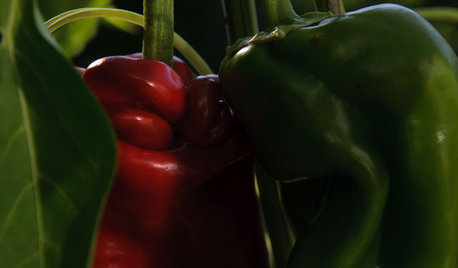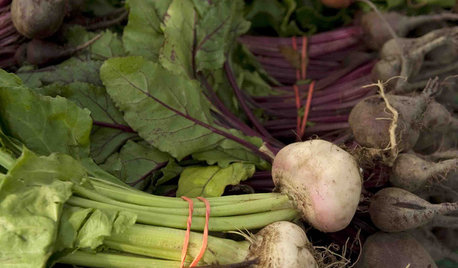Peppers: Numex? Other favorites?
Pamchesbay
11 years ago
Related Stories

GARDENING GUIDESSummer Crops: How to Grow Peppers
Some like 'em hot; others like them sweet. With the incredible range of peppers available for home gardens, you can have your pick
Full Story
SHOP HOUZZShop Houzz: Like Salt and Pepper
Cute and kitschy ways to say ‘I love you’ with themed salt and pepper shakers
Full Story
HOME OFFICESRoom of the Day: Easing Into a Home Office Update
A decorator revamps her husband’s workspace with favorite objects and furnishings he grows to love
Full Story
FARM YOUR YARDIf You Have Room for Only One Summer Crop ...
Get an edible that’s long on flavor even if you’re short on space, with a long-time gardener’s favorite picks
Full Story
KITCHEN DESIGNWorld of Design: Favorite Recipes From Food Lovers Around the Globe
Travel with your tastebuds and experience for yourself these international foodies' favorite dishes
Full Story
GARDENING GUIDESBackyard Birds: Northern Cardinals in the Snow, and Other Red Birds
Brilliant crimson feathers make these friends stand out in a crowd
Full Story
FUN HOUZZDon’t Be a Stickybeak — and Other Home-Related Lingo From Abroad
Need to hire a contractor or buy a certain piece of furniture in the U.K. or Australia? Keep this guide at hand
Full Story
KITCHEN DESIGNThe Most Popular Kitchen Storage Ideas of 2015
Maximizing every inch, keeping necessities close at hand and finding room for technology top Houzzer favorites
Full Story
PETSHouzz Call: Show Us Your Summer-Loving Dog!
Share a photo of your pooch kicking back in the backyard, helping you in the workshop or enjoying your favorite summer getaway
Full Story
FARM YOUR YARDCool-Season Vegetables: How to Grow Beets
Give canned versions of this fall and spring garden favorite the heave-ho and discover its true flavor and colors
Full Story

elkwc
Okiedawn OK Zone 7
Related Professionals
Wake Forest Landscape Contractors · Wilmington Landscape Contractors · Edmond Landscape Contractors · Barrington Landscape Contractors · Petaluma Landscape Contractors · Tustin Landscape Contractors · Wallingford Landscape Contractors · Maple Heights Landscape Contractors · Centennial Decks, Patios & Outdoor Enclosures · Greendale Decks, Patios & Outdoor Enclosures · Miami Decks, Patios & Outdoor Enclosures · New Berlin Decks, Patios & Outdoor Enclosures · Pittsburgh Decks, Patios & Outdoor Enclosures · Salem Decks, Patios & Outdoor Enclosures · South Lyon Decks, Patios & Outdoor EnclosuresOkiedawn OK Zone 7
PamchesbayOriginal Author
Okiedawn OK Zone 7
elkwc
PamchesbayOriginal Author
chriser
elkwc
chriser
Macmex
Okiedawn OK Zone 7
soonergrandmom
elkwc
PamchesbayOriginal Author
soonergrandmom
nated
soonergrandmom
Okiedawn OK Zone 7
PamchesbayOriginal Author
Macmex
soonergrandmom
Okiedawn OK Zone 7
soonergrandmom
tracydr
Andrea1102
Okiedawn OK Zone 7
elkwc